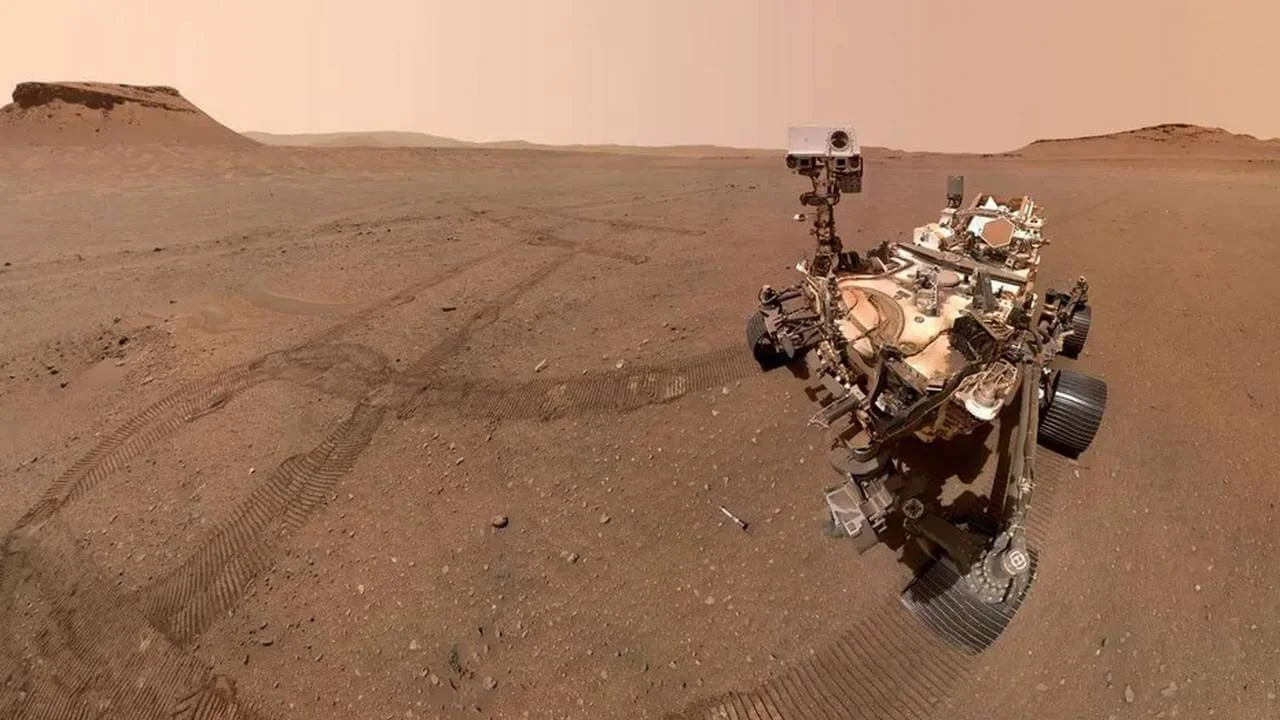NASA Rover Finds Iron-Laced Mars Mudstone, Clues to Past Life
Tiny iron-phosphate nodules and sulfide rings in Jezero mudstones point to life on Mars.

NASA’s Perseverance rover has revealed iron-phosphate “poppy seed” nodules and iron-sulfide reaction fronts in ancient mudstones of Jezero Crater. These mineral patterns, linked to organic carbon, point to low-temperature chemical cycles that once reshaped Mars’s sediments—and may even hold clues to past life.
When Perseverance rolled into Neretva Vallis on Jezero Crater’s western rim earlier this year, its instruments weren’t just capturing dramatic landscapes. They were analyzing the fine-grained mudstones of the Bright Angel formation, laid down in an ancient lake or river delta. What stuck out were tiny, dark nodules—later identified as vivianite (an iron-phosphate)—and millimeter-scale rings that host greigite (an iron-sulfide).
Subsurface radar, high-resolution cameras and chemistry tools showed these minerals formed after the mudstone settled. Organic-carbon signatures found at the same spots imply the organics fueled redox reactions: organic matter gave up electrons to reduce iron and sulfate in the rock, concentrating phosphorus and sulfur into new mineral phases.
Related: Mars’ Jezero Crater Mudstones Reveal Redox Chemistry
Finding Vivianite and Greigite
Radiation-tolerant cameras and micro-X-ray fluorescence mapped hundreds of submillimeter nodules rich in iron, phosphorus and zinc. Their 3:2 iron-to-phosphorus ratio matches vivianite—common in Earth’s waterlogged sediments where iron reduction takes place.
In a nearby target, concentric reaction fronts revealed cores enriched in iron, sulfur, nickel and zinc. Those cores fit the chemistry of greigite, an iron-sulfide that forms when sulfate is reduced. These sulfide-rich zones were encircled by bleached rings where iron-phosphate minerals dominate.
Organic Molecules as Chemical Drivers
A deep-ultraviolet Raman spectrometer detected an organic “G band” signal co-located with the vivianite nodules. Brighter G bands meant stronger organic presence, darker rock color indicated more iron reduction—and vice versa. This inverse relationship suggests organic molecules oxidized in place, triggering iron and sulfate reduction, just as microbes do on Earth.
On our planet, bacteria use iron and sulfate as “electron acceptors” to break down organics. That process leaves vivianite and greigite behind. While Mars may lack living cells, Perseverance’s team proposes that similar abiotic reactions—driven by simple organic acids or gas‐phase sulfur—could also account for the minerals.
A Window into Ancient Habitats
The Bright Angel mudstones formed under cool, freshwater or brackish conditions—ideal for habitability. The Red Planet’s early environment once supported liquid water, sedimentation and chemical energy gradients.
By collecting a core named “Sapphire Canyon,” Perseverance has secured samples for eventual return to Earth. Only detailed laboratory analyses will determine whether these redox signatures require biology—or if purely chemical pathways suffice.
Why It Matters
These findings add a new dimension to Mars’s story: active, post‐depositional chemistry driven by organics reshaped its lakebed sediments. If life ever arose on Mars, these reaction features are prime targets in the quest for biosignatures.
Perseverance’s next steps include exploring nearby layered outcrops and caching more cores. Each sample helps scientists untangle Mars’s geochemical web and inch closer to answering the million-dollar question: was there ever life on the Red Planet?
This article has been fact checked for accuracy, with information verified against reputable sources. Learn more about us and our editorial process.
Last reviewed on .
Article history
- Latest version
- Last updated by Dayyal Dungrela, MLT, BSc, BS
- Peer reviewed by Dr. Arjun Patel, PhD
Reference(s)
- Hurowitz, Joel A.., et al. “Redox-driven mineral and organic associations in Jezero Crater, Mars.” Nature, vol. 645, no. 8080, 10 September 2025 Nature Publishing Group UK, doi: 10.1038/s41586-025-09413-0. <https://www.nature.com/articles/s41586-025-09413-0>.
Cite this page:
- Posted by Aisha Ahmed